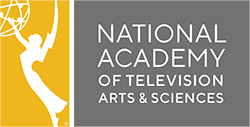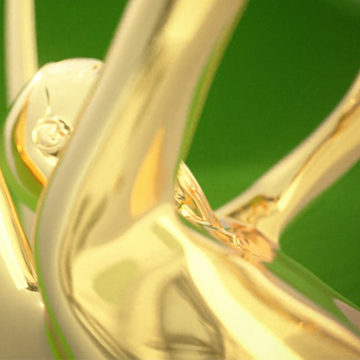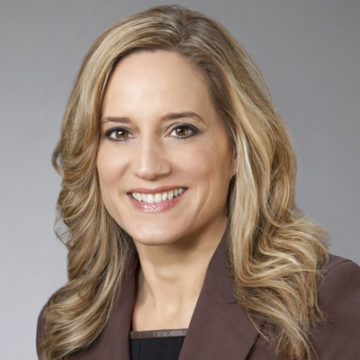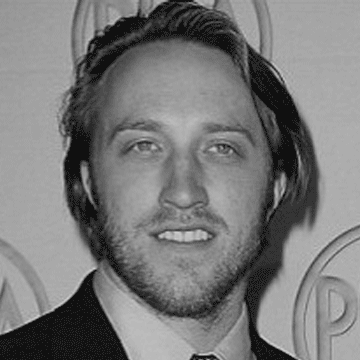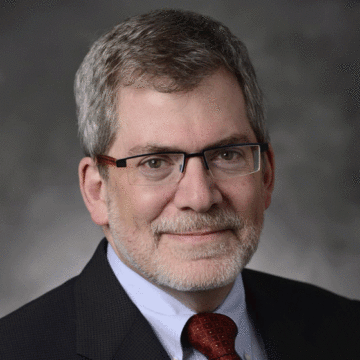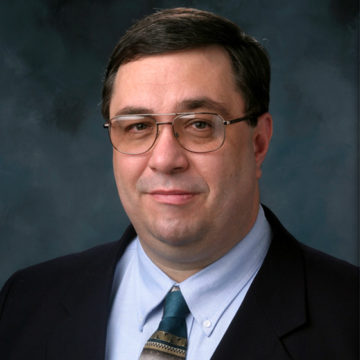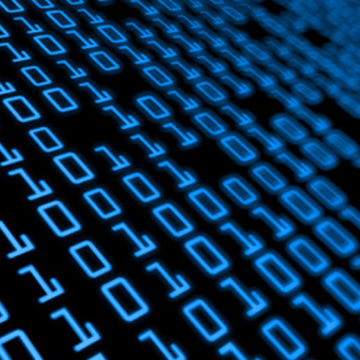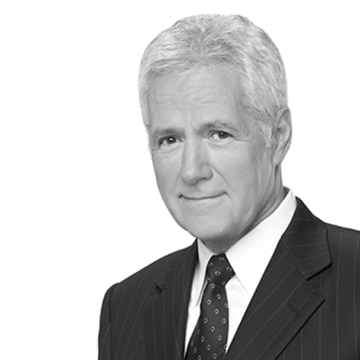Television Engineering Pioneers
Introduction
 Television has always been a global phenomenon. Consider the word itself. Television was coined, from Greek and Latin roots, by a Russian, who first used the word in France in 1900 (the earliest-known appearance of the word in print is shown above right). The paper the Russian presented at the International Electricity Congress that year surveyed some of the work that had already taken place in developing television technology, including that of some Germans and of a Polish inventor working in Austria.
Television has always been a global phenomenon. Consider the word itself. Television was coined, from Greek and Latin roots, by a Russian, who first used the word in France in 1900 (the earliest-known appearance of the word in print is shown above right). The paper the Russian presented at the International Electricity Congress that year surveyed some of the work that had already taken place in developing television technology, including that of some Germans and of a Polish inventor working in Austria.
Work on television technology before 1900? There was, though the subject went by such names as electrovision and telephonoscope. In fact, a paper published in a television technical journal in 1977 was titled “Historical Notes on Television Before 1900.” Prior to 1900, important work on television technology was conducted in Australia, Austria, France, Germany, Ireland, Italy, Poland, Portugal, Switzerland, the United Kingdom, and the United States.

The Technology and Engineering Awards Committee of the National Academy of Television Arts & Sciences (NATAS) is not restricted geographically or chronologically in the awards it can recommend. The current scope of the committee, however, restricts awards to companies, organizations, or living individuals. Clearly, work on television technology in the 19th century would not have been conducted by any individual living today; that’s also true of work conducted in the 1920s—or even later.
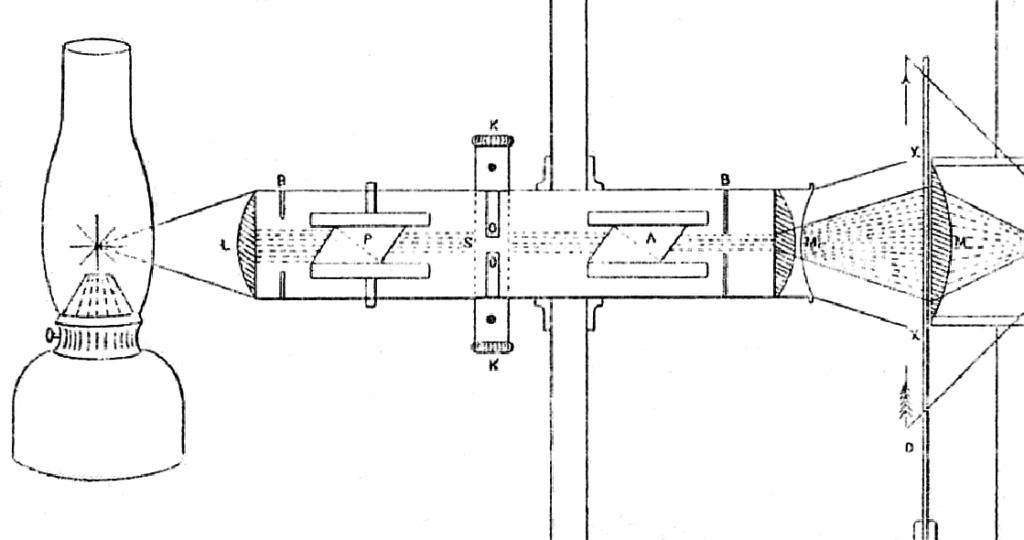
an Australian-designed television set with a “light valve,” allowing an oil lamp to be used as the light source
The NATAS Television Engineering Pioneers list, therefore, was created in 2020 to recognize deceased individuals whose work has materially affected television but has not been recognized by a NATAS Technology and Engineering Emmy® award. The Technology and Engineering Awards Committee votes on and recommends members of the list. It is expected that more members will be added each year.
1. “The Class of 1877” – George Roswell Carey, Adriano de Paiva, Frederick Harrison Glew, Julijan Ochorowicz, William Edward Sawyer, Constantin-Marie Senlecq
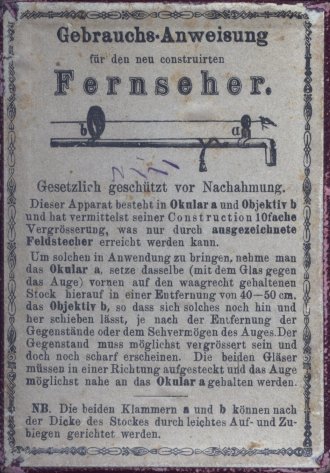
description of a telescope as a Fernseher: http://www.monocular.info/fernseher.htm used with permission
The word television literally means distant seeing. The word telescope, of only Greek roots, means the same thing. In fact, in German, the same word, fernseher, has been used for both a telescope and a television set. What sets television apart from telescopes (and from the magic mirrors and crystal balls of fables) is that television requires both a camera and a display; the camera breaks the moving images into component parts and the display reassembles them.
As the 1900 Russian paper that coined the word television pointed out, in 1839 a French scientist had discovered and published a means of converting light to electricity. It wasn’t until the demonstration of the Siemens artificial eye in 1876 (for which the Academy issued three Emmy® awards), however, that the concept of electronic vision took off. The earliest publication about television appeared in The Sun in New York City on March 30, 1877.

the earliest-known publication in any language about television, The Sun, New York, March 30, 1877, p. 2
The author used the pen name “Electrician,” and it’s not clear that he or she had any real concept of the technology involved. The piece referred to “quasi electric wires of a peculiar make and consistency” and the displays “being constantly kept filled with a newly discovered gas, a sort of magnetic-electric ether.” Another person supposedly working on television in 1877 referred to “a magnetic wave or current passing between the eyes of two individuals” and the “actinism of the light ether.” Two others writing about television in 1877 also didn’t really contribute to the field. One suggested that Alexander Graham Bell had come up with a form of television (he had not), and the other simply called for “powerful minds” to solve the problem.
Six others who reported working on television in 1877, however, did indicate that they knew the issues involved and attempted to come up with solutions. All suggested the use of selenium to convert variations in light intensity to an electrical signal, and all suggested glowing platinum wires to reproduce the images.
Their work led the way to further research. Although there is no record of television research prior to 1877, there has not been a year since that has not had research into television technology.
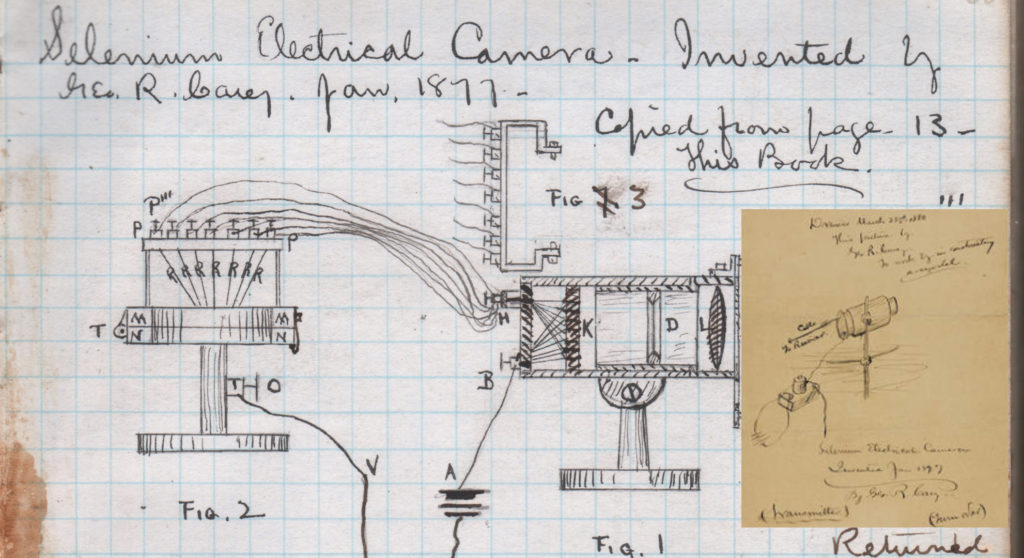
a page of Carey’s notebook from the Karpeles Manuscript Library Museums collection inset: a single-line video Carey diagram from the Archive of Modern Conflict
George R. Carey was the first both alphabetically and chronologically. He was a “surveyor” (the term used at the time for an engineer) working for the city of Boston. A witnessed notebook that became public in 2001 puts the date of his early television work in January of 1877 and notes that his inspiration was a December report in Scientific American of the Siemens artificial eye.
It had long been thought that Carey considered only direct connections between each picture element (pixel) in the camera and its corresponding pixel in the display, as shown in the large image above. For a camera with an array of just 100 x 100 pixels, that would require 10,000 connections.
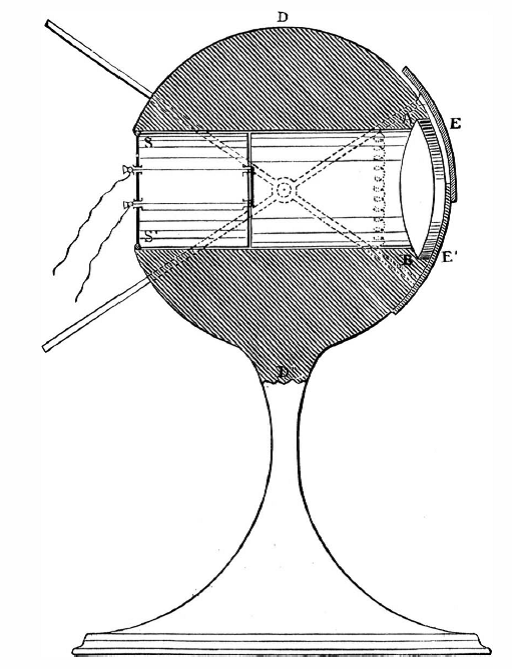
Siemens Artificial Eye from the Proceedings of the Royal Institution, February 18, 1876
More-recently revealed Carey documents, however, show that he had also considered a single-line system (inset above right).
Through no fault of his own, Carey almost erased from history the very demonstration of the Siemens artificial eye that inspired him (and other television inventors). An influential book about image transmission published in Germany in 1911 (Handbuch Der Phototelegraphie und Telautographie by Arthur Korn und Bruno Glatzel) put Carey’s earliest work on television in 1875 instead of 1877.
While that might seem a minor error, it would mean that he couldn’t have been influenced by the 1876 demonstration of the Siemens artificial eye (shown at right). The error was repeated by many other influential technologists in different countries.
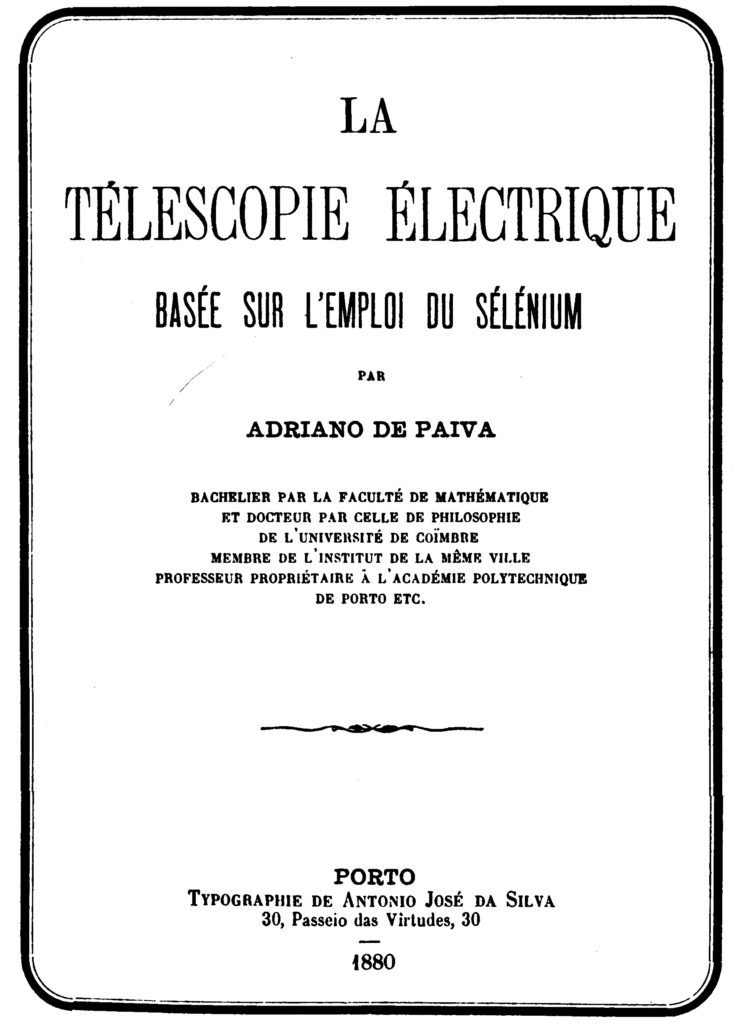
Adriano de Paiva (in full, Adriano de Paiva de Faria Leite Brandão), the first Count of Campo Belo, was a Portuguese scientist and professor who chaired both the chemistry and physics departments at the Polytechnic Academy of Porto. He had enrolled at the University of Coimbra at age 14 and received his doctorate at age 19. For his contributions to science, he was ennobled by King Luis I.
Like Carey, he was inspired by the demonstration of the Siemens artificial eye and published the first technical paper about television in the journal O Instituto. He later expanded his paper into the first book published about television, in English, French, and Portuguese. The title page is shown at right
Frederick H. Glew was an English inventor who became a pharmacist, a radiologist, and a pioneer in the use of radioactive materials. He was made a Member of the British Empire for his work in providing glowing dials during World War I.
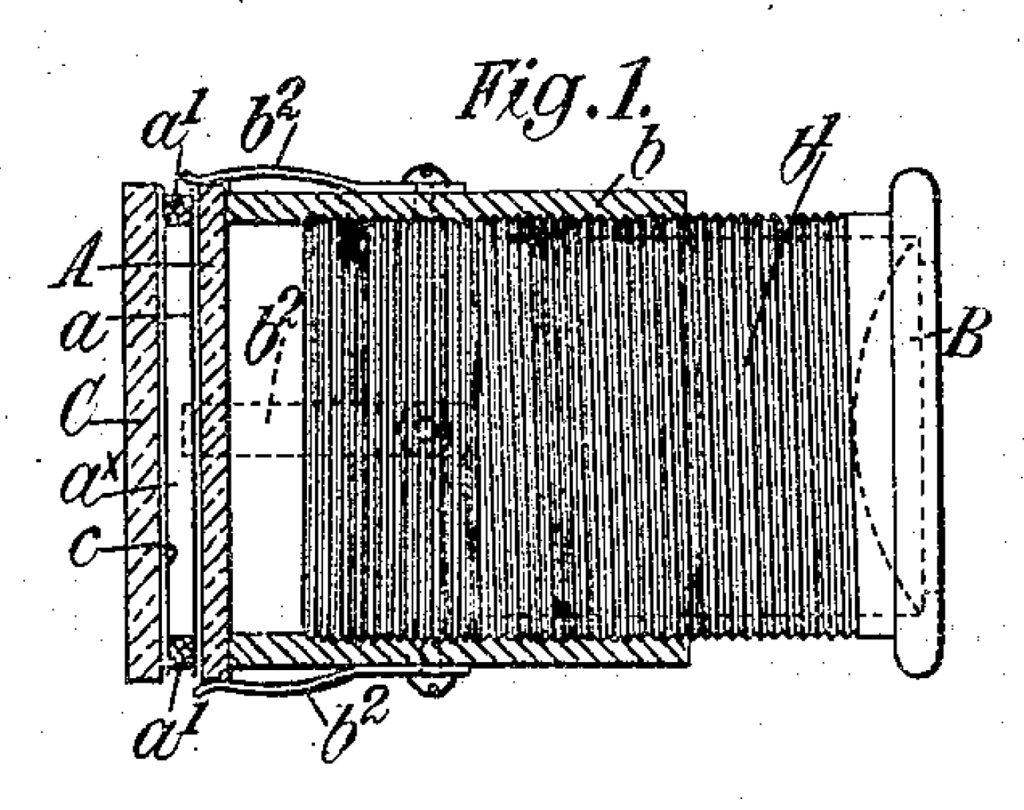
a fluorescent-screen display system from Glew’s non-television U.S. patent 787,170
He held many patents worldwide in different fields. His patent for “Improved Manufacture of Electrical Vacuum Tubes” was issued in 1897, ten years before the first vacuum-tube amplifier.
Glew wrote that he began working in television in October 1877, when he was still a teenager, and published information about the use of selenium cells (as in the Siemens artificial eye) to capture pixels in the camera and glowing platinum wires (as in a toaster) to reproduce the pixels in the display. He recognized the need for scanning to reduce needed circuits.
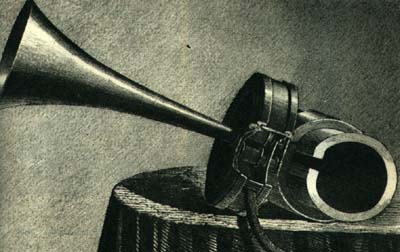
a microphone invented by Ochorowicz
Julijan Ochorowicz was a Polish polymath whose work ranged from poetry to respiration, psychology, photography, sound transmission, and atomic theory. Like others, he was inspired by the demonstration of the Siemens artificial eye to speculate on a combination of telephony and photography he referred to as a telephotoscope.
He published a very detailed paper on the subject in the journal Kosmos, which suggested the use of the image-scanning mechanism of the copying telegraph (for which the Academy issued an Emmy® award) to get around the multiple-wires problem.
Beyond the technology, Ochorowicz’s television paper discussed content and viewing conditions. He suggested both individual-viewing and large-screen auditorium displays.
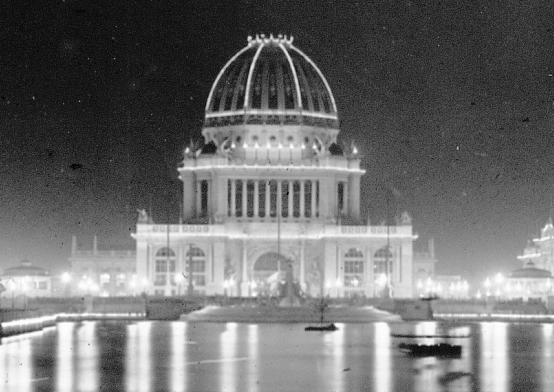
the Electricity Building at the 1893 Exposition
William E. Sawyer was a New York-based engineer and inventor working in fields ranging from telegraphy to elevator safety. He is perhaps best known for co-founding the first incandescent light bulb company in the United States; light bulbs of his design lit the World’s Columbian Exposition in Chicago in 1893. Significantly, one of his early patents was for a copying telegraph (an image scanning system).
In the fall of 1877, according to Sawyer’s report, he described his proposed television system to witnesses. As in the systems of the others, he proposed using selenium in the camera and platinum in the receiver, but he proposed the use of spiral scanning of a moving point in each. He later explained in Scientific American why he didn’t think the system would work and challenged readers to try their own ideas.
Unfortunately, aside from his engineering, Sawyer did not exhibit exemplary behavior. He frequently changed company names and locations to escape creditors. According to his partner, some clients “would have nothing to do with him by the reason of his drunkenness and immorality.” He died while awaiting imprisonment after shooting a neighbor.
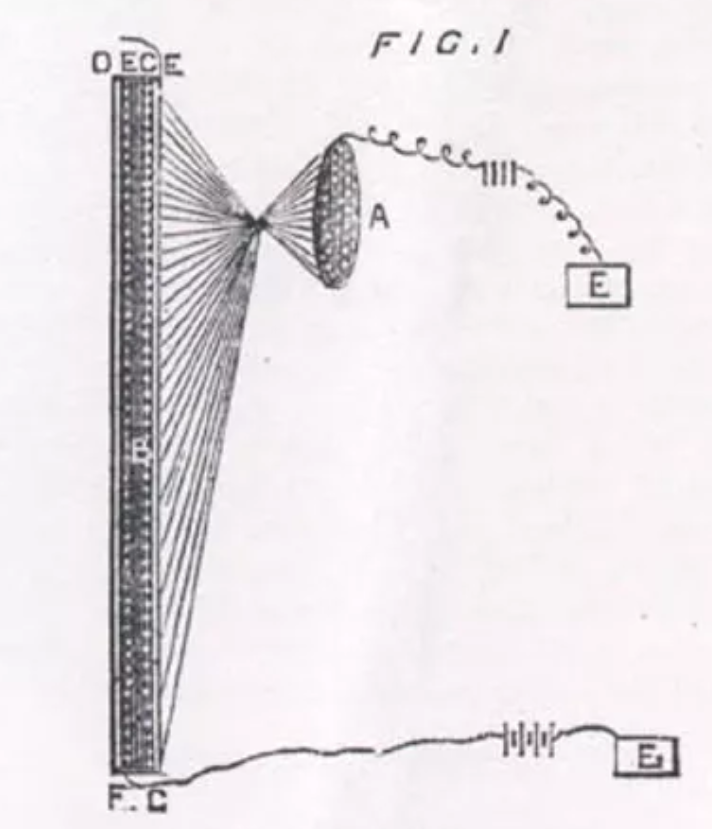
a version of Senlecq’s telectroscope camera in English Mechanic and World of Science in 1881
Constantin Senlecq was a French “notary” (something similar to a lawyer at that time and place) and electroplater. Dealing with the estate of someone who died in England, Senlecq decided to improve his English by reading Scientific American and thus became aware of developments in telephony and of the Siemens artificial eye.
Senlecq proposed various forms of what he called the “telectroscope.” The name was more popular than any of his proposed techniques. Unlike the others in the “Class of 1877,” Senlecq returned to television in the 20th century and received a French patent for a scanned system in 1907.
2. Earliest-Known Video Image – Denis Daniel Redmond
Denis D. Redmond was an ophthalmic and aural surgeon living and working in Dublin, Ireland. He was a Fellow of the Royal College of Surgeons of Ireland. At the time of his death, on August 11, 1892, he was a member of the Council of the Ophthalmic Society, ophthalmic and aural surgeon at St. Vincent’s Hospital and assistant surgeon at the National Eye and Ear Infirmary, lecturer in ophthalmology at the Catholic University, and on the Examining Board of the Royal University, all in Dublin. He had studied medicine in Dublin, London, Paris, and Vienna. He was also an “electrician” (the term used at the time for experimenters in the electrical field) and an inventor.
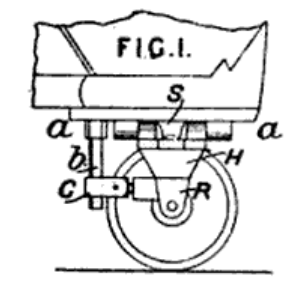
Redmond-invented roller skate, from 1875 British provisional patent number 3397
Sometimes his inventions seemed related to his surgical work. Redmond invented microphones, for example, and introduced the concept of “push-pull amplification” in the era before electronic amplifiers (a form of telephone transmitter he invented in 1878 is shown at right). Sometimes they seemed unrelated, as in a new form of roller skates (left).
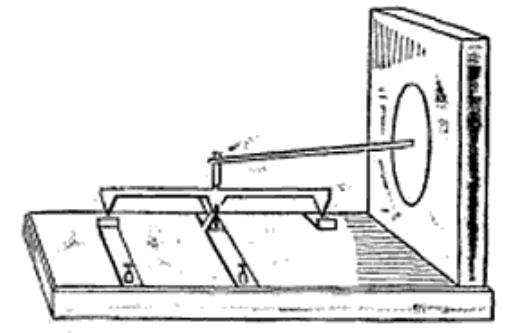
“Redmond’s Telephone Transmitter,” (microphone) from The Engineer, September 13, 1878, p. 184
The February 7, 1879 issue of English Mechanic and World of Science carried an unusual letter from Redmond. It was titled “An Electric Telescope.”
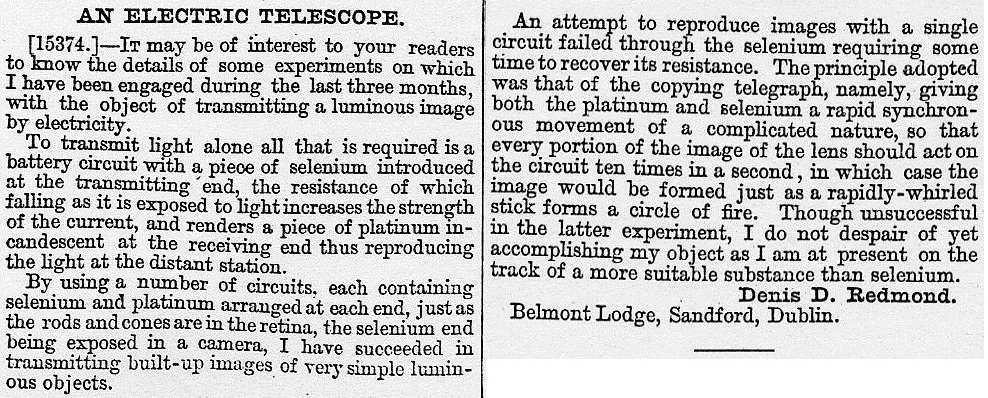
It was not that unusual by 1879 to see a published description of a television system based on selenium in the camera and platinum in the receiver. Even the reference to the image scanning of the “copying telegraph” (something like a facsimile-transmission system) was not unique. And scientists had already discovered selenium’s required “time to recover its resistance,” which made it an unlikely candidate for use in a scanned television camera.
One unique aspect of Redmond’s letter was specifying that the whole image should be seen “ten times in a second.” That’s the earliest-known frame rate for television. More extraordinary, Redmond wrote, “I have succeeded in transmitting built-up images of very simple luminous objects.” That is the earliest-known report of a television image.
There is no basis to doubt Redmond’s claim. His obituary in the British Medical Journal on August 20, 1892 noted, “Essentially a modest man, he wrote little, but he was held in high regard by his fellows as a skilled oculist and a highly informed surgeon.” It also noted that “his attainments were many. He was a most accomplished electrician; several electrical instruments were invented by him with the view of utilizing this powerful agent in the treatment of ophthalmic and oral affections.”
Redmond seems to have felt more strongly about the benefits of television than he did about any of his other inventions. On May 10, 1880, he wrote a letter to The Times of London, which published it on May 13. In it, he renounced any patent rights to television in favor of the public interest.
3. Establishing Television Research as Real - William Edward Ayrton, John Perry, and Shelford Bidwell
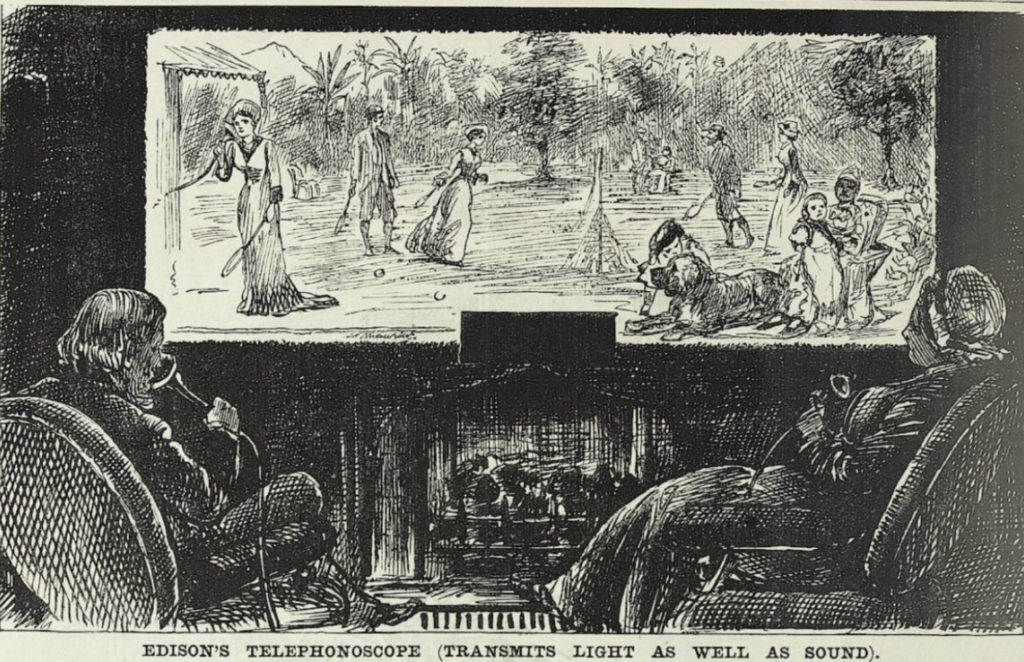
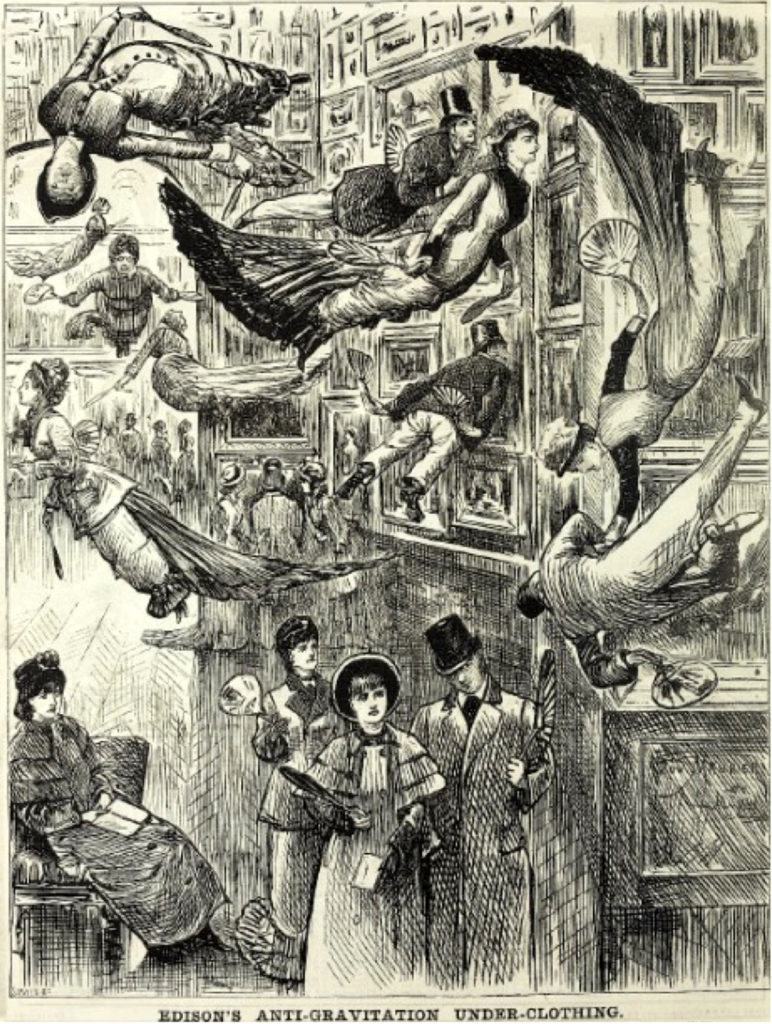
Punch's Almanack for 1879, published December 9, 1878, included a number of cartoons by George du Maurier. One of them, titled “Edison's Telephonoscope” (shown above), was later called a “prediction” by historian Erik Barnouw in his book Tube of Plenty: The Evolution of American Television (Oxford University Press, 1975). As those who read the original publication at the time knew, however, it was a spoof, no more intended as a “prediction” than a series of other cartoons in the same issue, titled “Edison’s Anti-Gravitation Under-Clothing.” One, with visitors floating through an art gallery, is shown at right.
Television, in the 1880s, was in danger of being considered no more real than the “anti-gravitation under-clothing.” From one side, some engineers—even television-technology pioneer William Sawyer—saw television research as futile. Sawyer wrote in Scientific American (June 12, 1880), “There is no likelihood of any plan of this kind [for what we today call television] ever being reduced to practice, for some of the difficulties in the way of all of the plans are insuperable….”
From the other side, there were many hoaxes reporting that television had already been fully achieved. As historian Russell Burns put it in his book Television: an international history of the formative years (The Institution of Electrical Engineers, 1998), “Since many of these suggestions were hopelessly ill-conceived and naïve, there was a need for some experimental evidence which would show the feasibility or otherwise of the ideas being advanced.” Into that dark time, three scientists brought light.
William Edward Ayrton was born in London; John Perry was born in Northern Ireland. Both studied under William Thomson (later Lord Kelvin), and both became professors at the Imperial College of Engineering in Tokyo and later in London. The two worked so closely together—in many fields—that their inventions were simply referred to as Ayrton-Perry developments. Shelford Bidwell, born in England, practiced law before turning his attention to the photoconductivity of selenium.
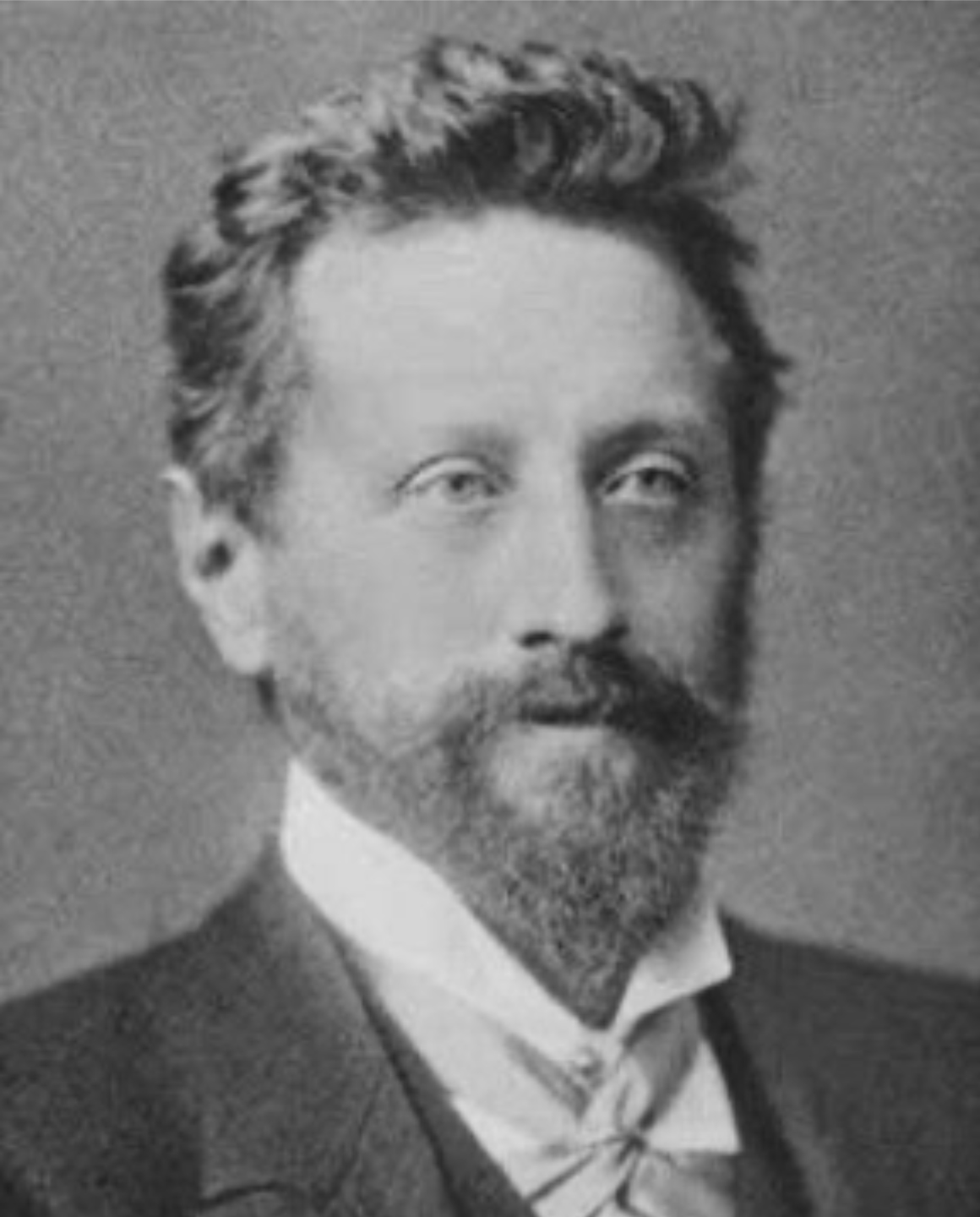
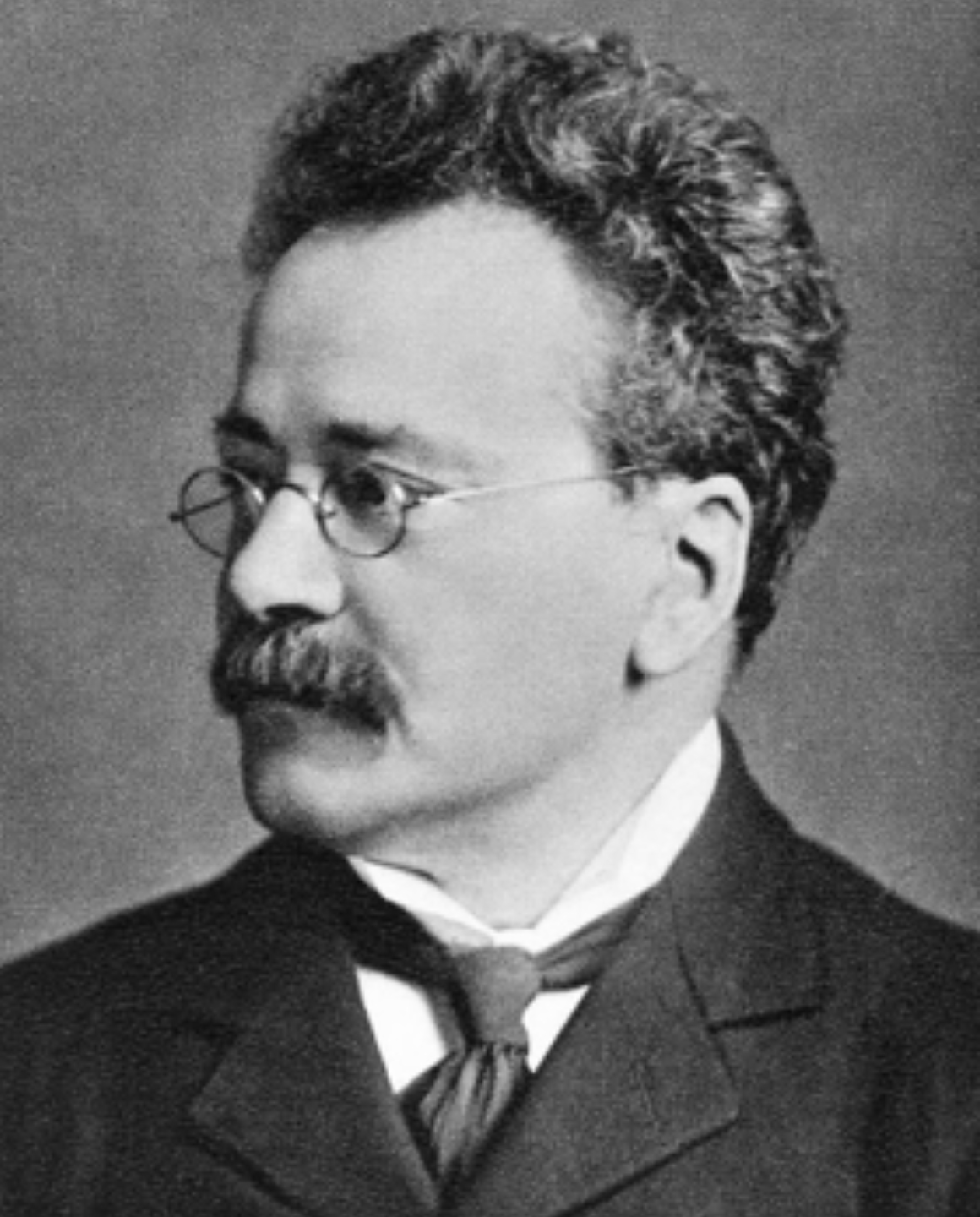
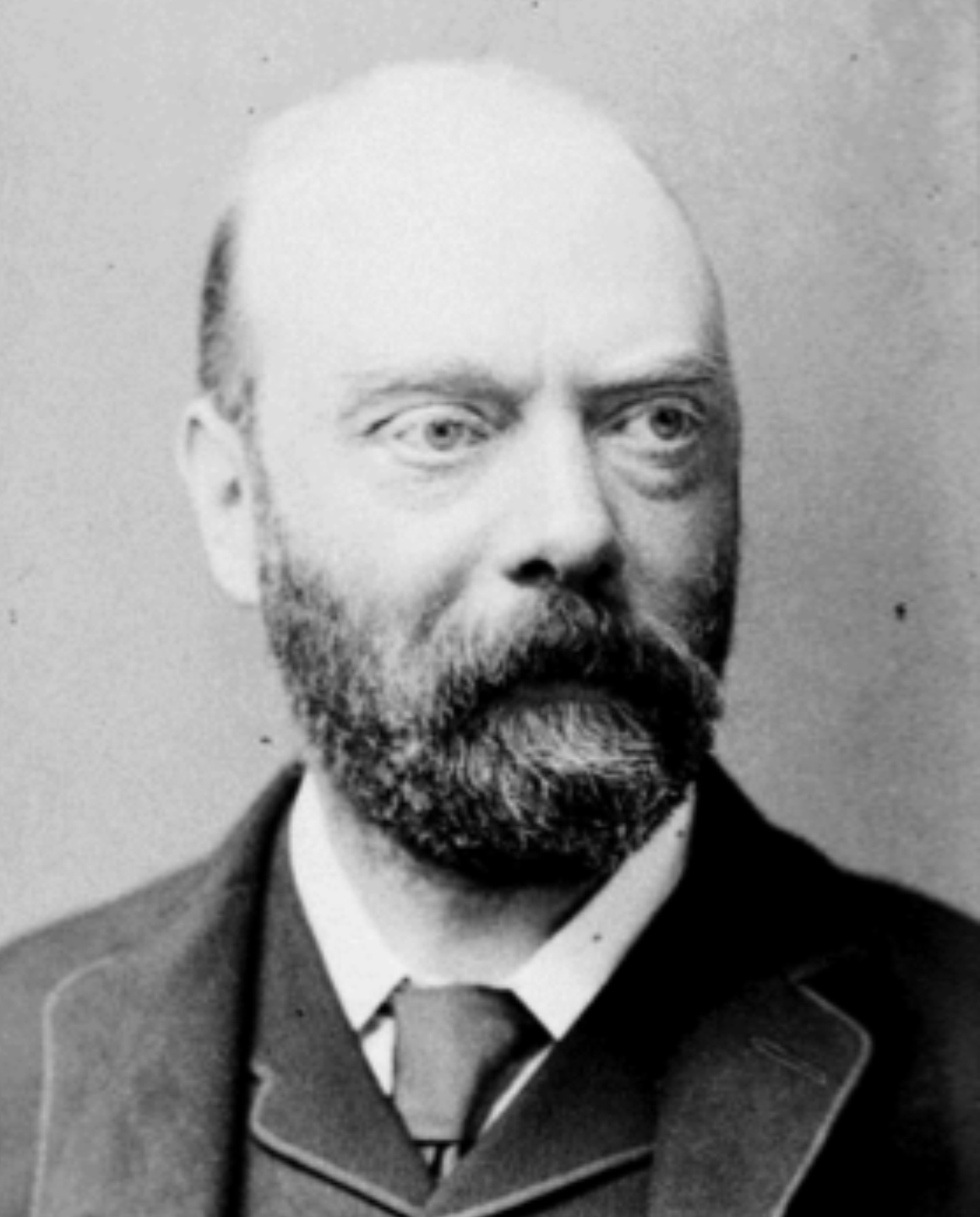
In 1881, each published papers and gave television-related demonstrations to such prominent groups as the Royal Institution of Great Britain. Ayrton & Perry referenced the work of Bidwell and vice versa. The demonstrations were elementary: transmission of simple shapes of still images and indications of how light at a receiver might be controlled by a light valve.
They were enough both to debunk the hoaxes that television had already been achieved and to point out that progress was being made. As Burns put it, “Ayrton and Perry’s and Bidwell’s demonstrations probably had some effect in terminating the absurd claims and rumors which followed the prospect of seeing by electricity.”
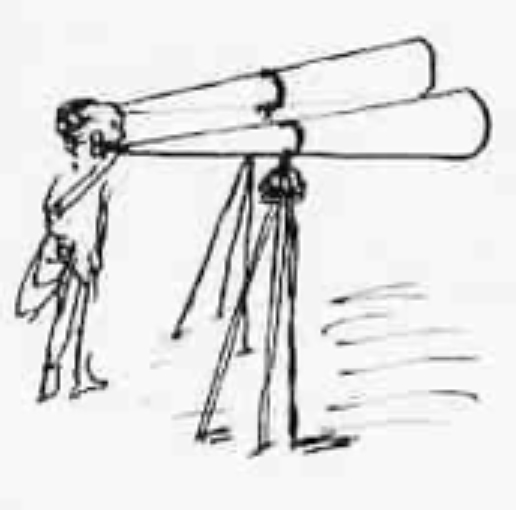
Perhaps strangely, Ayrton and Perry had been inspired to do their work by du Maurier’s“telephonoscope” cartoon. Perhaps strangely, too, Edison had filed a patent caveat in 1878 for what he called a telephonoscope; it was a binaural ear trumpet for listening to distant sounds (right)..
4. A Visionary - Maurice Leblanc
A French engineer best known for his work on induction motors, alternators, vacuum pumps, and refrigeration, he wrote just one paper (of which we are aware) related to television, but what a paper it was! Called an “important article” by the eminent television historian George Shiers, “Study on the electrical transmission of luminous impressions” appeared in the journal The Electric Light in 1880.
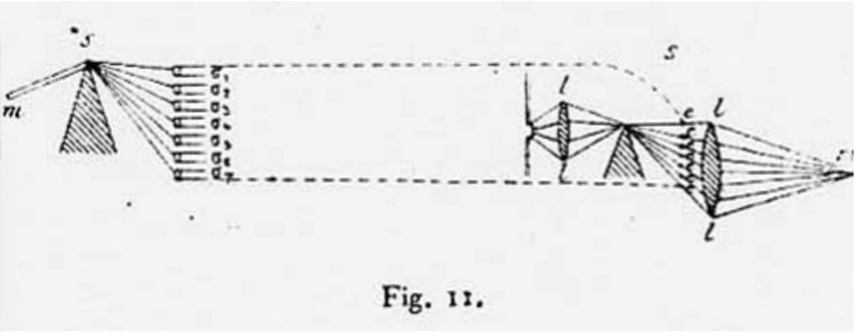 Leblanc’s paper included the earliest-known suggestion of color imaging (left), a consideration of the phosphorescent effect of cathode rays (the key element of what we would later call a picture tube), a variable-aperture light modulator (later used for movie soundtracks), and more, including image pickup in an evacuated tube involving an electromagnet (elements used in later television-camera imaging tubes), mirror scanning, and modulation of arcs, the last later used for wireless transmission. He was awarded the Poncelet Prize by the French Academy of Sciences in 1913 for the totality of his research.
Leblanc’s paper included the earliest-known suggestion of color imaging (left), a consideration of the phosphorescent effect of cathode rays (the key element of what we would later call a picture tube), a variable-aperture light modulator (later used for movie soundtracks), and more, including image pickup in an evacuated tube involving an electromagnet (elements used in later television-camera imaging tubes), mirror scanning, and modulation of arcs, the last later used for wireless transmission. He was awarded the Poncelet Prize by the French Academy of Sciences in 1913 for the totality of his research.
5. First Television Patent - Paul Gottlieb Nipkow
“Electrical Telescope” was awarded German patent 30,105 on January 15, 1885, a little over a year after its application. Aside from patenting a complete, end-to-end television system, and utilizing a light valve instead of glowing wires,
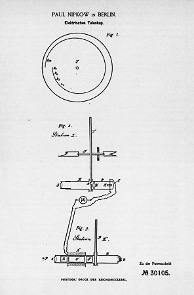
Nipkow introduced an image scanning system based on a spinning disk with a single spiral of holes. According to television historian Shiers, “Nipkow’s disk was the favored device in many schemes for more than 40 years.” Those schemes included the earliest television broadcasts around the world.
Nipkow told The New York Times in 1933 that the idea had come to him on Christmas Eve fifty years earlier. “How sure I was of having made a discovery may be seen from the fact that, despite serious financial difficulties, I did not hesitate to spend the money needed to apply for a patent.” Berlin’s first television station was called the Paul Nipkow Sender in his honor.
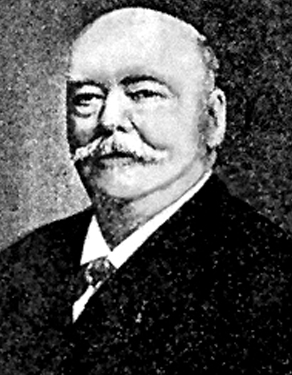
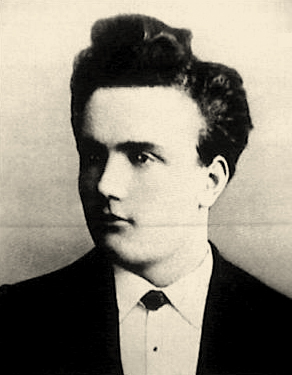
6. The Reflectors - Llewelyn Birchall Atkinson and Jean Lazare Weiller
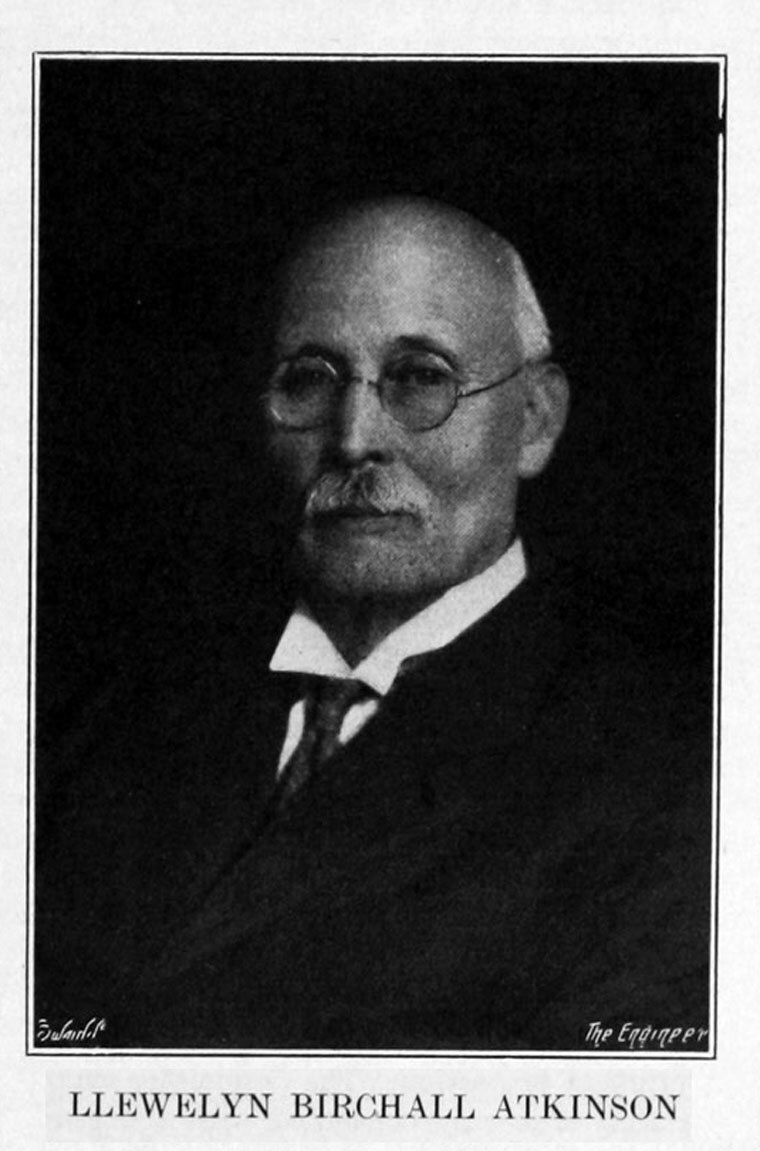 Nipkow’s perforated rotating disk might have inspired the era of electromechanical television, but it had a problem. In both “transmitter” (camera) and “receiver” (display), it allowed only a small amount of light to pass through the perforation. Some developers tried solving the problem with lenses instead of tiny perforations, but those made the disks heavier, more difficult to spin, and more dangerous. Atkinson and Weiller came up with a different idea (possibly before Nipkow): a rotating mirror wheel or drum.
Nipkow’s perforated rotating disk might have inspired the era of electromechanical television, but it had a problem. In both “transmitter” (camera) and “receiver” (display), it allowed only a small amount of light to pass through the perforation. Some developers tried solving the problem with lenses instead of tiny perforations, but those made the disks heavier, more difficult to spin, and more dangerous. Atkinson and Weiller came up with a different idea (possibly before Nipkow): a rotating mirror wheel or drum.
Born on August 27, 1863, Atkinson was not yet 19 years old when he first published about television in English Mechanic and World of Science in its April 21, 1882 issue. He had studied under Pioneers List member William Ayrton and in 1881 won the Silver Medal with Honours at the first examination held by the City and Guilds on electric lighting and power transmission. In 1889, reacting to an article about Weiller’s work, Atkinson said he had built “an identical apparatus” in 1882 and still had the models; they (right) are now in the collection of the Science Museum Group, which accepts the 1882 date.
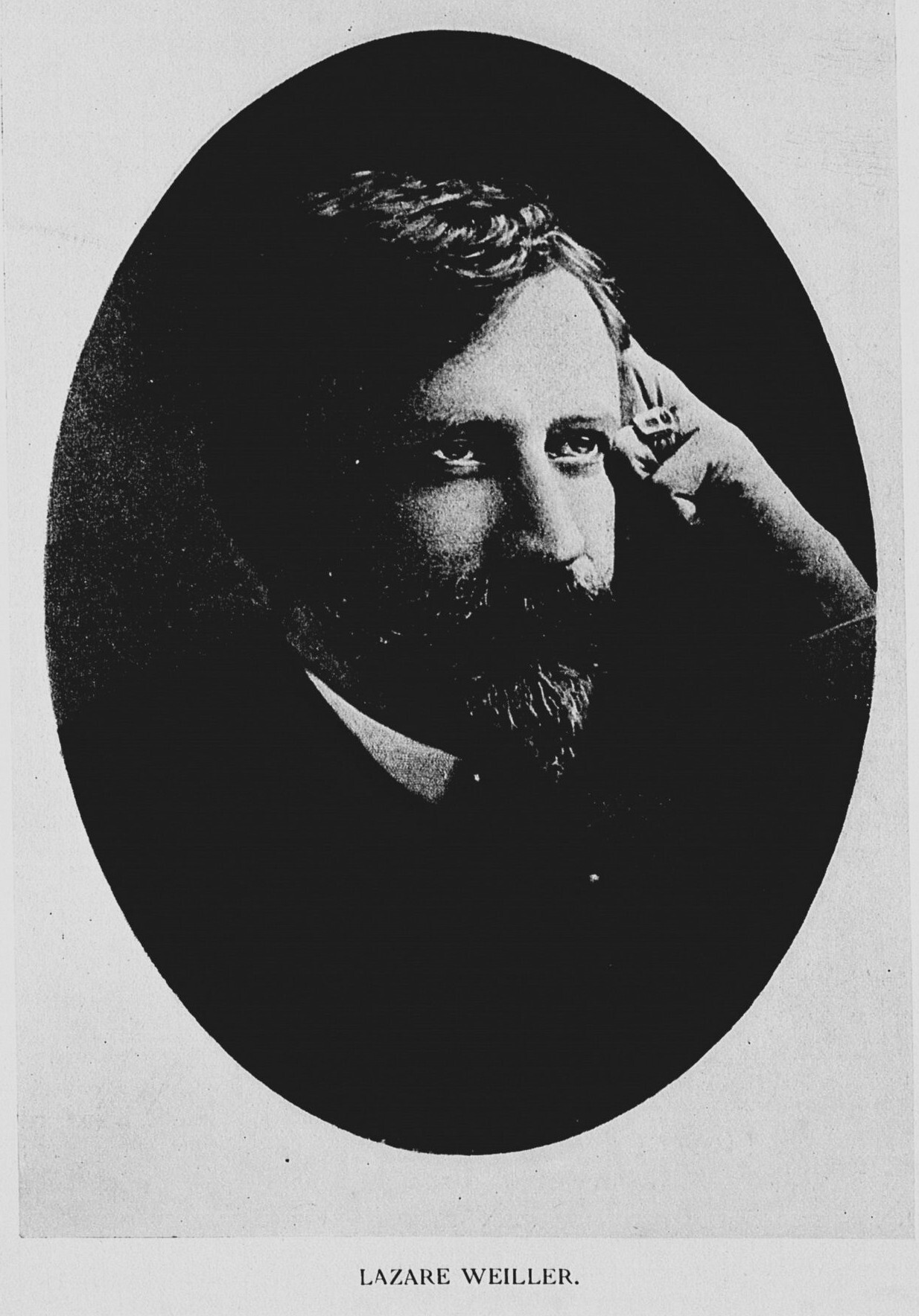 Born in 1858 in Alsace, Weiller in 1889 published a description of a television system using a mirror wheel. Weiller credited the work of Jean Antoine Lissajous on vibrating mirrors as his inspiration, but television historian André Lange indicates that Weiller had studied in London in a time frame that could have allowed awareness of Atkinson’s work. There is no known documentary evidence that can prove Atkinson’s claim, but he supported Weiller’s work.
Born in 1858 in Alsace, Weiller in 1889 published a description of a television system using a mirror wheel. Weiller credited the work of Jean Antoine Lissajous on vibrating mirrors as his inspiration, but television historian André Lange indicates that Weiller had studied in London in a time frame that could have allowed awareness of Atkinson’s work. There is no known documentary evidence that can prove Atkinson’s claim, but he supported Weiller’s work.
Unlike the Nipkow disk, the mirror wheel allowed much more of the light to be used. Whereas early Nipkow-disk-based television displays had tiny images, those using mirror wheels offered the first possibility of large video screens in homes.
7. THE INFUENCERS — Thomas Alva Edison, Jan Szczepanik, and Constantin Dmitrievich Perskyi (In Russian константин дмитриевич перский):
Beginning with reports of the Siemens “eye” in 1876, recognized by Technology and Engineering Emmy awards, research into television technology took off, with the first crude images demonstrated by Pioneers List member Denis Redmond shortly thereafter. By the end of the 19th century, however, little more seemed to have been achieved. Obscure inventors came up with more schemes, but there seemed little interest on the part of the public. Three influential engineers changed that.
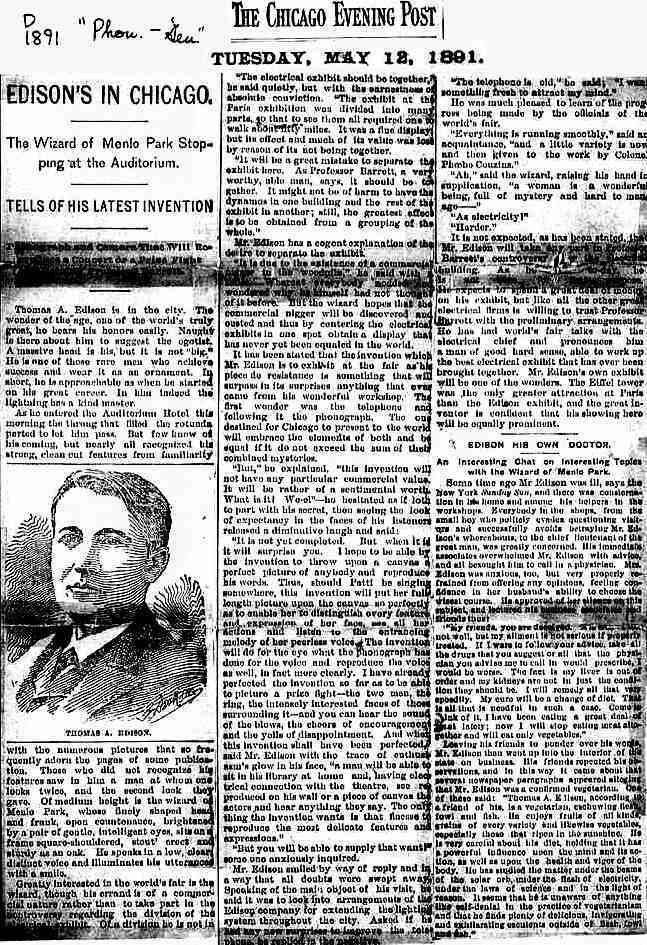 Late in his life, Edison opposed television. He was quoted in The New York Times in 1927 as saying it was “possible, but of very little general value. It’s a stunt.” In 1930 the same newspaper quoted him as saying “Locomotives are pretty well developed, but you wouldn’t want to buy one and have it in your house, would you? Television is like that.” In between, he told an interviewer television “will hardly be practical for general use.”
Late in his life, Edison opposed television. He was quoted in The New York Times in 1927 as saying it was “possible, but of very little general value. It’s a stunt.” In 1930 the same newspaper quoted him as saying “Locomotives are pretty well developed, but you wouldn’t want to buy one and have it in your house, would you? Television is like that.” In between, he told an interviewer television “will hardly be practical for general use.”
Earlier, however, when he was seeking the contract toprovide electrical lighting for the World’s Columbian Exhibition in Chicago, he held a press conference there in 1891. It was covered by news media worldwide,and, in it, he suggested that he might exhibit what we would today refer to as color television via cable.
Edison was awarded more than a thousand patents in his lifetime. Polish inventor Jan Szczepanik was said to have been awarded only “several hundred.” Nevertheless, Mark Twain (Samuel Clemens) referred to him as “the Austrian Edison” in non-fiction reports of his work and featured him in a fiction story, “From the ‘London Times’ of 1904” (published in 1898). Both told of his television work, which Twain called the “telelectroscope” (it was more commonly called the “telectroscope,” as shown in an 1898 article in The New York Times at left).
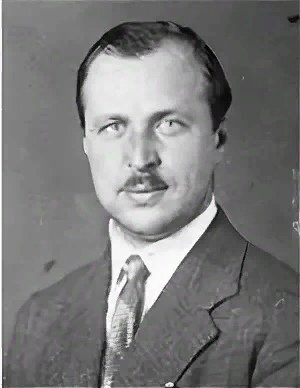
Constantin Perskyi was not as well known as either Edison or Szczepanik, not even in his native Russia, where he was a member of the nobility and a professor and ultimately achieved the rank of major general. In 1899, he presented a report to the first All-Russia Electrotechnic Congress on (translated) “The current state of the issue of electric vision at a distance.” The report significantly included Russian developments not well covered elsewhere. The word he used for “electric vision at a distance” was телевизирование, pronounced televizirovaniye.
In 1900, he repeated his report on the afternoon of August 24 to the International Electrical Congress at the world’s fair in Paris. For an audience of non-Russian-speakers, he needed to come up with a different term. He did. Perskyi’s influence on the industry may be judged by how well his term was adopted. He called it “television.”
